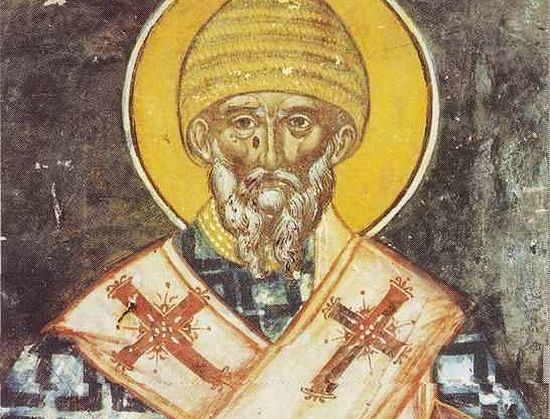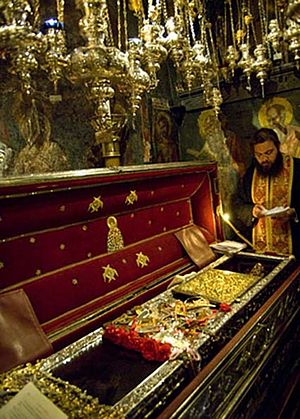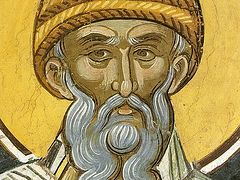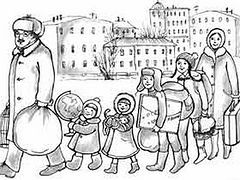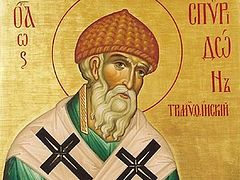After Corfu's deliverance from a siege by the Turks - owing to the protection of St. Spyridon the Wonderworker - on August 11, 1716, Andrea Pisani, the governor and captain-general of Corfu, wished to do something in order to thank the saint for his great benefaction concerning the aforementioned deliverance. He consulted a papist theologian, Francisco Frangipani, as to what he should do, what would be best and well-pleasing to the saint.
The theologian said that it would be a very good and holy deed to build a precious marble altar inside the Church of St. Spyridon, so that they could perform a Latin mass inside. And "Your excellency can hear the mass in your own language when you are present there," he said. The theologian's counsel pleased the governor, and he ordered that the materials be prepared at once. However, before the materials were made ready, it seemed appropriate to him to call the priests of that church (where the relics of the divine Spyridon were housed) and find out in what way they could be of assistance. As soon as they heard the unexpected news, they told him bluntly that this was a dangerous innovation, and they wished in no way to help him with his plan. The governor replied angrily that even if they were not willing to help, as the supreme authority he would do as he wished and would command that the materials be gathered outside the saint's church without fail. So there was gathered together asbestos, plaster, marble, and a slab from select marble, superbly crafted for an altar.
That night in a dream, the governor saw a man in a monastic habit saying to him, "Why are you bothering me, and why are you upsetting my children (i.e., the priests)? Know that what you are intending to do is not in your interest." At daybreak he called the theologian into his room (that is, the one who gave him the idea) and related to him the dream in detail. The theologian said, "As Christians, we are obliged in no way to believe dreams, nor are we to accept them at all as real. You should certainly consider this, my lord, to be an obvious temptation of the devil, with which the adversary troubles the good, in order to amuse himself and impede such a most-pious deed." The governor calmed down, fully convinced by the theologian's words. That night, the governor again saw the same monk in a dream threatening him harshly saying, "Know, most certainly, that if you bother my holy house, you will regret it, as it is of no profit." The ruler was terrified by this steadfast decree. He did not again wait for daybreak, but straightaway called for the theologian. He told him every detail about the vision, described his faint-heartedness and said that he was overcome by such fear, that he not dare go through with the task. Then the theologian speaking up and poising himself nobly, said, "My lord, know, that if you grow timid from doing this holy deed that you have decided upon, you will appear to people as not being of proper judgement, since you believe in dreams conjured up by the devil." The governor was filled with courage by these words and as day came on, which was the 11th of November 1718, he went to the church of the saint so as to venerate. He was accompanied by those of his court (along with the city's engineer) in order to measure the area according to length, width, and height for the construction of the altar. At that time, the oldest of the priests, Marinos Voulgaris Sakellarios, and the priest in charge, Spyridon Voulgaris (the great protopresbyter), stood before the governor and with humble voices begged him not to go through with such a modification, as it might not seem best to the saint. When he heard them, however, he flew into a rage, threatening that if they did not do as he wished and become silent, he would send them to Venice in chains, to be thrown into prison, never again to see the light of day. "I am not intending to do some unlawful deed," he said, "but to set up an altar, a holy and God-pleasing work!" The priests were cast into despair and terror-stricken by his threats, and with the other orthodox present - who were not few - they ran towards divine assistance. Opening the holy reliquary of our great father, they chanted a paraklesis, shedding abundant tears, hoping to hinder the governor's bad intention.
At around midnight on November 12th, the day on which the craftsmen expected to start their work, there was lightening and thunder - thunderbolts, one after the other. It was then that the guard of the governor's residence saw a monk approaching him holding a lit torch in his hand. The guard, according to procedure, asked him once, and then twice, "Who are you? Where are you going?" And seeing as he did not receive an answer, he lifted his musket in order to kill the visitor. But then the monk answered, "I am Spyridon." As soon as he said this he grabbed the guard by the arm and threw him with great force out into Spianada Square in the city of Corfu, close to the Church of the Crucifixion. There the guard found himself standing upright on both feet holding his gun as he had been before. Immediately following this, the saint lit the store house of the castle on fire. The extreme heat caused the buildings that were inside the governor's palace and everything around it to collapse. The governor was killed inside, his neck having been crushed between two beams in such a way that it was as though they had been placed there for that purpose. The theologian was found outside the walls of the citadel in a ditch, into which all the squalor of the city sewer drained and flowed, holding his private parts in his hand. He received a just foretaste of his reward for his excellent advice, and the grandeur of his polity (as a papist). Many others were also killed, both men and women, some belonging to the court and others not, about nine-hundred souls. Around that time two other fearsome signs also took place.
First: That same night, a large silver oil lamp that the governor had hung before the saint's relics as an offering fell to the ground and its base broke into pieces, in spite of having been hung with a very strong chain. None of the numerous other oil lamps fell or suffered anything similar. And what happened to the oil lamp (or rather, the base) is apparent still today, because it was again hung up in the same manner it was found as evidence of the incident.
Second: At the exact same moment (as was confirmed later by those who looked into the matter) a flaming arrow - a thunderbolt of lightening to be precise - struck the picture of the governor in Venice and burnt it up, without anything else in the house suffering any harm. His brothers and relatives immediately interpreted this as a bad omen concerning the governor.
The rest of the Latin laymen and clergy, or rather the "Prevedore" as they were called, the Latin bishop, other officials and private citizens, as many as lived in the city of Corfu (for it was the home of the bishop's palace and many others), these are who I call the rest, gave the command that the aforementioned building materials be taken from the Saint's church. They made use of the materials elsewhere, save the marble slab which had been cut for the altar. This was reverently taken to their so-called "duomo," that is the cathedral of their own metropolis, into the great altar. It can still be seen there today resting low on its side.
The soldier, who had been the guard at the castle on that day, was roused and crying out in a loud voice, declaring, "Saint Spyridon did these great and fearful things." And he would tell the whole story in great detail. Therefore, the Latins, not wanting to bear the shame, sent him away to Italy three days later.
This is the story of the frightful and monumental event that took place in the city of Corfu, owing to the most-divine Spyridon - quick to listen and patron of the city and of the whole Church. We must now consider carefully and in detail those circumstances, which prove the event undeniable, so that the enemies of the truth cannot blather, saying that the arson at the store house was a coincidence, from which the governor and those around him died.
Source: Ouranou Crisis (Judgement from Heaven), Archimandrite Nektarios Ziompolas. Athens, 2007.

